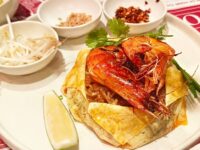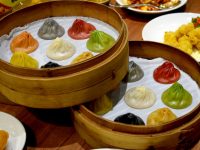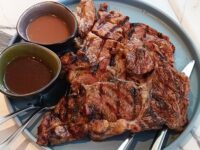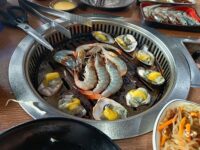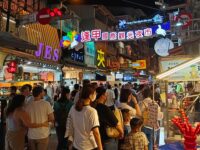Many places in the Philippines are known for their joyous and colorful festivals, and Cebu is certainly no exception! Although the fiestas of this island province are renowned for their unique color and pageantry, they are also deeply rooted in the Cebuanos’ religious tradition and history. Cebu’s fetes are also opportunities for thanksgiving, reminiscence, as well as reunions of family and friends. Here we will have a look at some of Cebu’s famous festivals, which are special for both locals and visitors alike.
-
Sinulog Festival
The grandest and most celebrated of Cebu’s festivals, the Sinulog, is celebrated every 3rd Sunday of January in Cebu City. The Sinulog commemorates the feast of the Santo Niño, or the Child Jesus, which is a significant icon in Cebu’s history. The fiesta is marked by Masses, processions, and pageants, as well as a large street party in the heart of the city. The gaiety and verve of the festivities is so infectious, and will certainly have even newcomers shouting out “Pit Senyor!”
-
Kadaugan sa Mactan
Another festival rooted in Cebu’s history is the Kadaugan sa Mactan, commemorated from April 22 to 27 in Lapu-Lapu City, Mactan. This celebration reenacts the Battle of Mactan between the chief Lapu-Lapu and the Portuguese explorer Ferdinand Magellan, during which the former drove the latter’s ships away from Mactan’s shores. Kadaugan sa Mactan is a symbol of local sovereignty in the face of foreign intrusion, as well as of Filipino valor.
-
Pintos Festival
This annual festival in Bogo City is centered around pintos, a local delicacy made from corn, condensed milk, and eggs. From May 26 to 27, the streets are transformed into a mardi gras party as well as a showcase of cultural tourism. The Pintos Festival also has religious roots, as it is also an opportunity to honor the city’s patron saint, Saint Vincent Ferrer.
-
Haladaya Festival
The Haladaya Festival is celebrated every August 30 in the municipality of Daanbantayan. This celebration has its roots as a thanksgiving for the town being saved from pirate attacks during the Spanish colonization. It is also a feast dedicated to Saint Rose of Lima, the town’s patron saint. The Haladaya Festival is marked by a grand parade as well as a street dancing competition.
-
La Torta Festival
Until recently, the town of Argao celebrated the Pitlagong Festival every September 29, on the feast of Saint Michael the Archangel. The Pitlagong Festival has been replaced by the La Torta Festival, which combines the festive and religious overtones with the tradition of making torta, a rich sponge cake of Spanish origin. The residents of Argao take great pride in this sweet, which is widely distributed during the festivities for locals and visitors alike.
-
Toslob Festival
The town of Oslob commemorates the Toslob Festival every 8th of December, on the Marian feast of the Immaculate Conception. It is also a feast of thanksgiving for bountiful catches and harvests. Despite its religious roots, the Toslob Festival is anything but overly solemn; like many Cebuano festivals this is also celebrated with street dancing and pageantry the whole town gleefully participates in.
-
Tag-Anito Festival
A celebration that has its roots in the deepest parts of Cebu’s past is the Tag-Anito Festival in the town of Tudela. The Tag-Anito Festival revisits the ancient practice of revering anitos or nature spirits that were part of the religious animistic observances of the Cebuanos prior to being colonized by Spain. Part of the festival involves retelling of the tale of Mandayang, a folk hero who defended the town with the help of his supernatural guardians and talismans. This dramatization staged from December 8 to 9 helps keep alive the town’s history especially for a new generation.
These seven festivals are only a few of the many annual celebrations that are part and parcel of Cebu’s rich culture and history. Each town has its own story which is retold in song, dance, parades, food, and other aspects of celebration. Participating in Cebu’s festivals is an excellent way not only to have fun, but to get to know this province’s heart and people from the inside out.
Note: this is a guest post.


